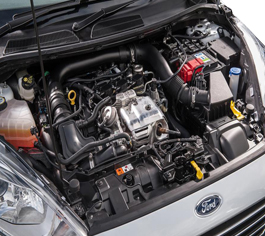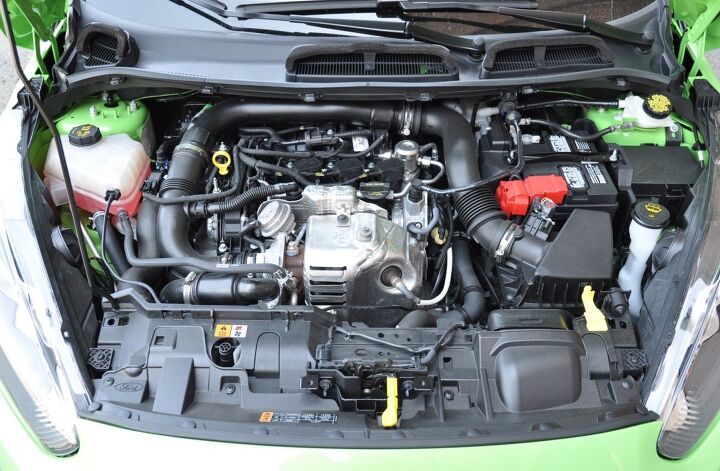Exploring the Evolution of Engines: From Timeless Styles to Modern Marvels
From the preliminary heavy steam engines that powered the Industrial Transformation to the development of interior combustion engines that changed mobility, each stage has actually contributed to higher effectiveness and ability. As we take a look at these turning points, one need to consider exactly how the future of engine style might unravel, challenging our perceptions of power and efficiency.
The Birth of Engine Technology
The advent of engine modern technology noted a critical moment in human innovation, changing power conversion and transportation. The earliest engines emerged from the demand to harness mechanical power for functional use, leading to the growth of gadgets that converted various power forms into motion. The concept of the engine can be traced back to ancient human beings, where easy machines, such as the waterwheel and windmill, made use of natural forces to perform job. It was throughout the late 17th and very early 18th centuries that substantial improvements began to materialize.
The growth of the inner combustion engine and the creation of the vapor engine militarized a profound shift in commercial capacities. These engines not just enhanced effectiveness yet also broadened the extent of human mobility, making it possible for unprecedented transport opportunities. The very early models prepared for the mechanical globe, promoting the rise of industries and reshaping societal structures.
As engine designs evolved, they incorporated innovative materials and progressed engineering concepts, leading the method for modern-day advancements - ford fiesta engine. The birth of engine modern technology stired up an unrelenting search of performance and power, establishing the phase for the vibrant development of transport and industrial machinery that would follow
Steam Engines and Their Impact

The heavy steam engine's influence was particularly noticeable in the transportation industry (ford fiesta engine). Steam-powered engines promoted the rapid movement of products and people across huge ranges, effectively diminishing the geographical barriers that had previously impeded profession and interaction. Steamships transformed marine traveling, permitting for quicker and extra dependable crossings of rivers and oceans.
In sector, vapor engines powered factories, enabling automation and the increase of metropolitan facilities as centers of economic task. This change not just modified labor characteristics yet also added to the appearance of a consumer-driven culture. In addition, vapor modern technology cultivated innovations in design and production processes, preparing for future developments in engine design. The heritage of heavy steam engines is profound, mirroring a zero hour in human ingenuity and the relentless search of development.
The Surge of Interior Burning
Often overshadowing heavy steam power, the rise of interior burning engines noted a transformative shift in transport and industry throughout the late 19th and very early 20th centuries. The growth of these engines, identified by their ability to burn fuel within the engine itself, made it possible for higher efficiency and power contrasted to traditional vapor engines. Introducing developers such as Nikolaus Otto and Rudolf Diesel played essential duties in developing engine designs, leading to widespread adoption in Extra resources autos, watercrafts, and industrial equipment.
The interior burning engine's small size and relatively light-weight nature helped with the emergence of personal automobiles, revolutionizing private flexibility and improving urban landscapes. By allowing faster traveling and the reliable transportation of items, these engines militarized financial development and weblink cultivated globalization. The flexibility of fuel options, consisting of fuel and diesel, further enhanced their charm, permitting diverse applications throughout different industries.
In spite of the environmental worries that would certainly later occur, the preliminary appeal of interior burning technology lay in its transformative potential. As society embraced this advancement, the foundation was laid for contemporary transportation systems, establishing interior combustion engines as a foundation of industrial improvement and day-to-day live throughout the 20th century.
Improvements in Engine Effectiveness
As interior combustion engines came to be important to transportation and sector, the emphasis shifted in the direction of boosting their effectiveness to satisfy expanding needs for performance and sustainability. Developments in engine design, product science, and innovation have substantially added to this development.
One major innovation is the development of turbocharging, which allows for boosted air intake, resulting in even more total fuel burning and enhanced power outcome without expanding engine size. Additionally, variable shutoff timing systems have been carried out to enhance engine performance throughout various RPM varieties, consequently improving gas effectiveness.
The usage of sophisticated fuel injection modern technologies, such as straight shot, has actually also played an essential duty. This method permits more precise control over the fuel-air mix, advertising far better burning and reducing exhausts. Light-weight products, consisting of aluminum and composite elements, have actually been adopted to lower overall engine weight, leading to boosted effectiveness.
These innovations show a more comprehensive trend within the vehicle market, where the harmony in between design innovation and ecological factors to consider drives the continuous quest for higher effectiveness in interior combustion engines. As a result, contemporary engines are now much more powerful, cleaner, and effective than ever, paving the means for a much more lasting future in transportation.
The Change to Electric Power
With growing worries over environmental impact and fossil gas dependence, the vehicle market is experiencing a significant shift in the direction of electric power. This change is driven by a mix of technological improvements, regulatory pressures, and altering consumer preferences. Electric automobiles (EVs) use an engaging choice to standard internal combustion engines, flaunting decreased greenhouse gas discharges and lower operating expense.
The surge of battery modern technology has been a game changer, with lithium-ion batteries ending up being a lot more reliable and affordable. Improved power thickness and faster billing capacities have made EVs more functional for daily use. Additionally, governments worldwide are carrying out incentives and setting enthusiastic targets for phasing out fossil fuel automobiles, thus accelerating the adoption of electric power.
Significant car manufacturers are spending greatly in study and advancement, causing the introduction of a varied variety of electric models. This includes not only auto however additionally business lorries and public transportation solutions. As billing infrastructure expands and battery technology proceeds to enhance, the change to electrical power is positioned to improve the automobile landscape, promoting sustainability and innovation in the years to find. The future of transportation is electrical, and the momentum is obvious.
Conclusion
The advancement of engine next technology stands for a considerable trajectory of development that has profoundly affected transportation and industry. From the fundamental heavy steam engines to the transformative interior combustion engines, each growth has actually added to improved movement and economic growth. The present shift toward electrical power emphasizes an essential dedication to sustainability, driven by improvements in battery innovation. This continuous evolution not just shows changing social requirements but additionally highlights the capacity for a cleaner and more reliable future in engine style.

Comments on “Why Choosing the Right Ford Fiesta Engine Parts Matters for Longevity”